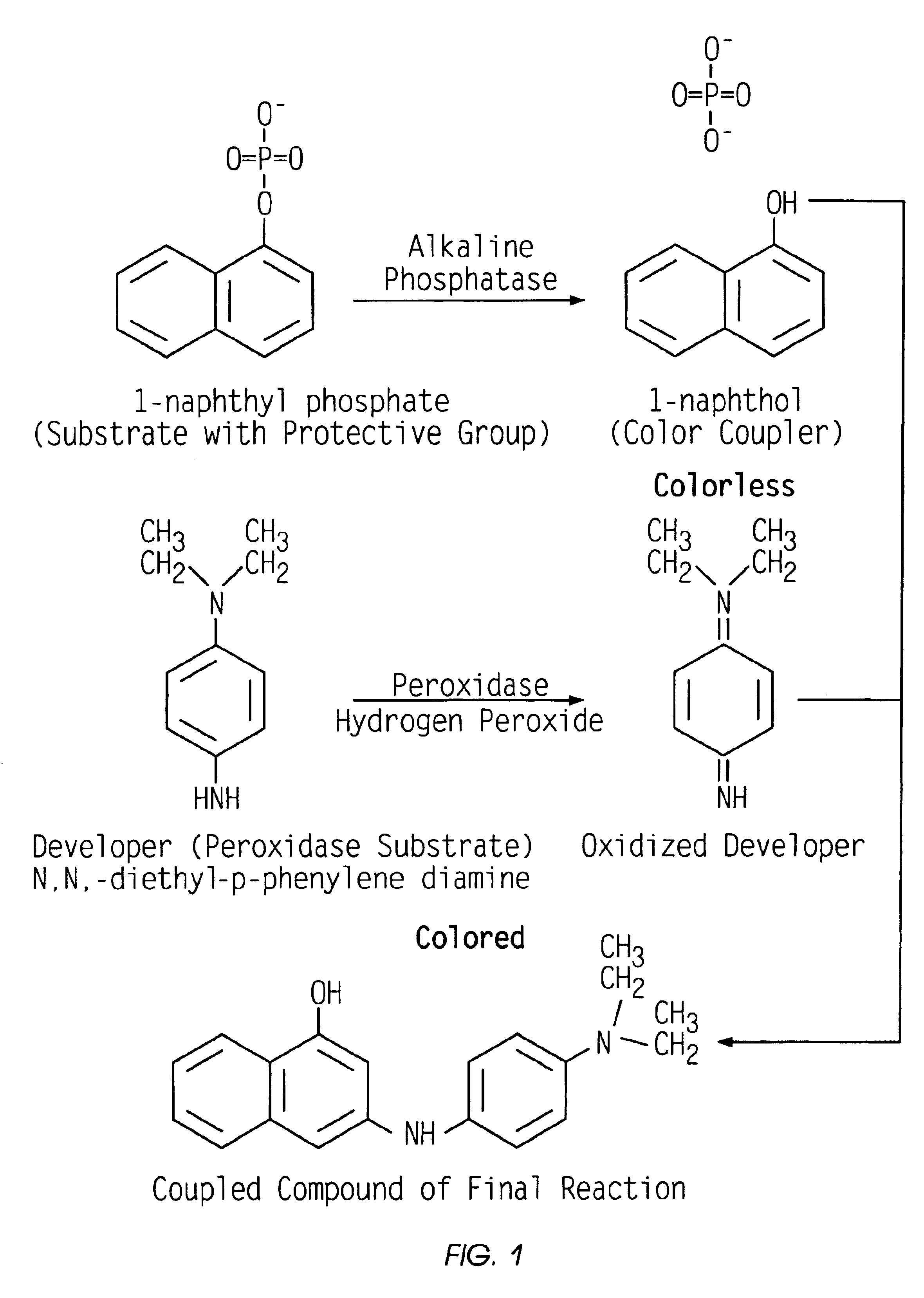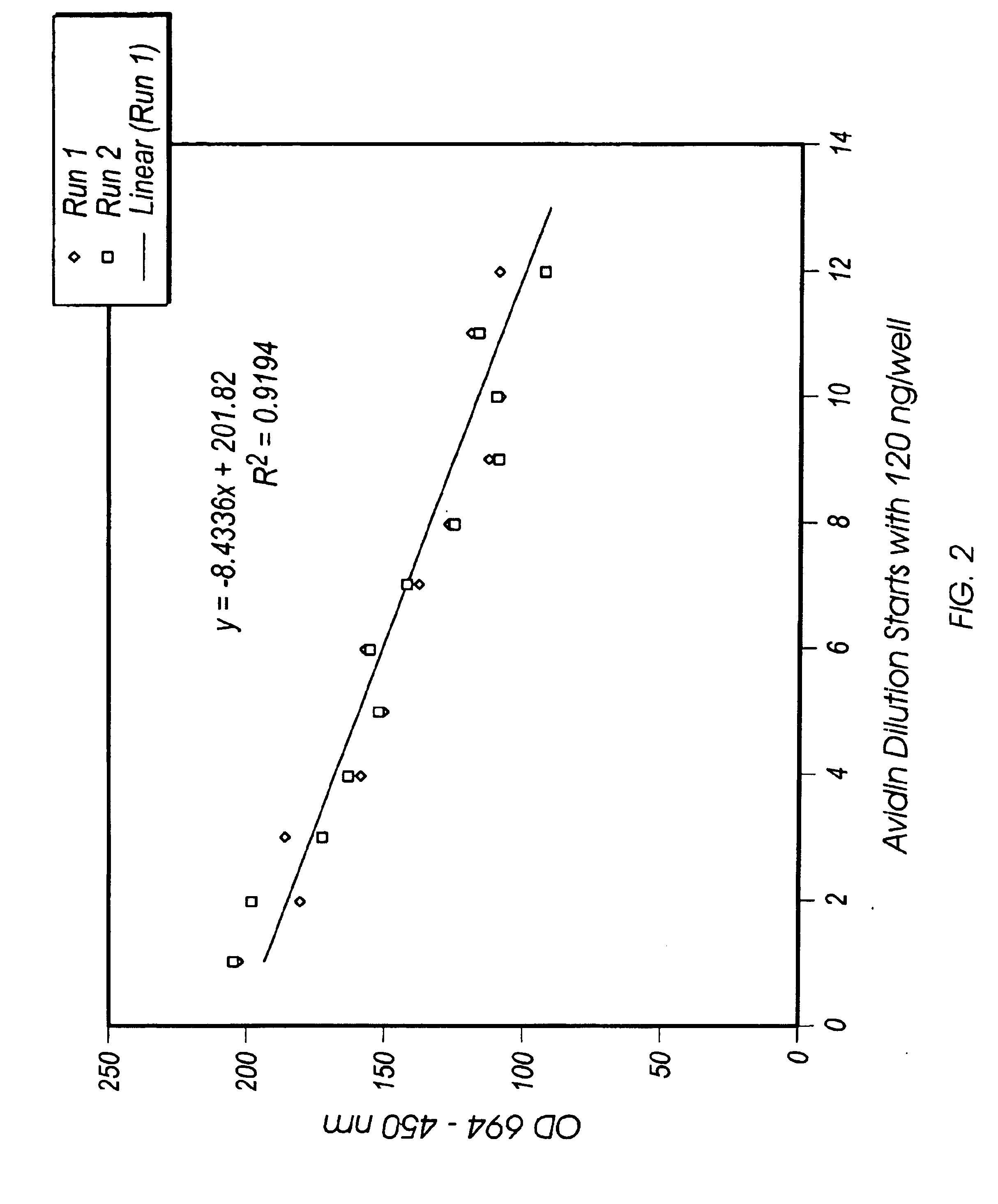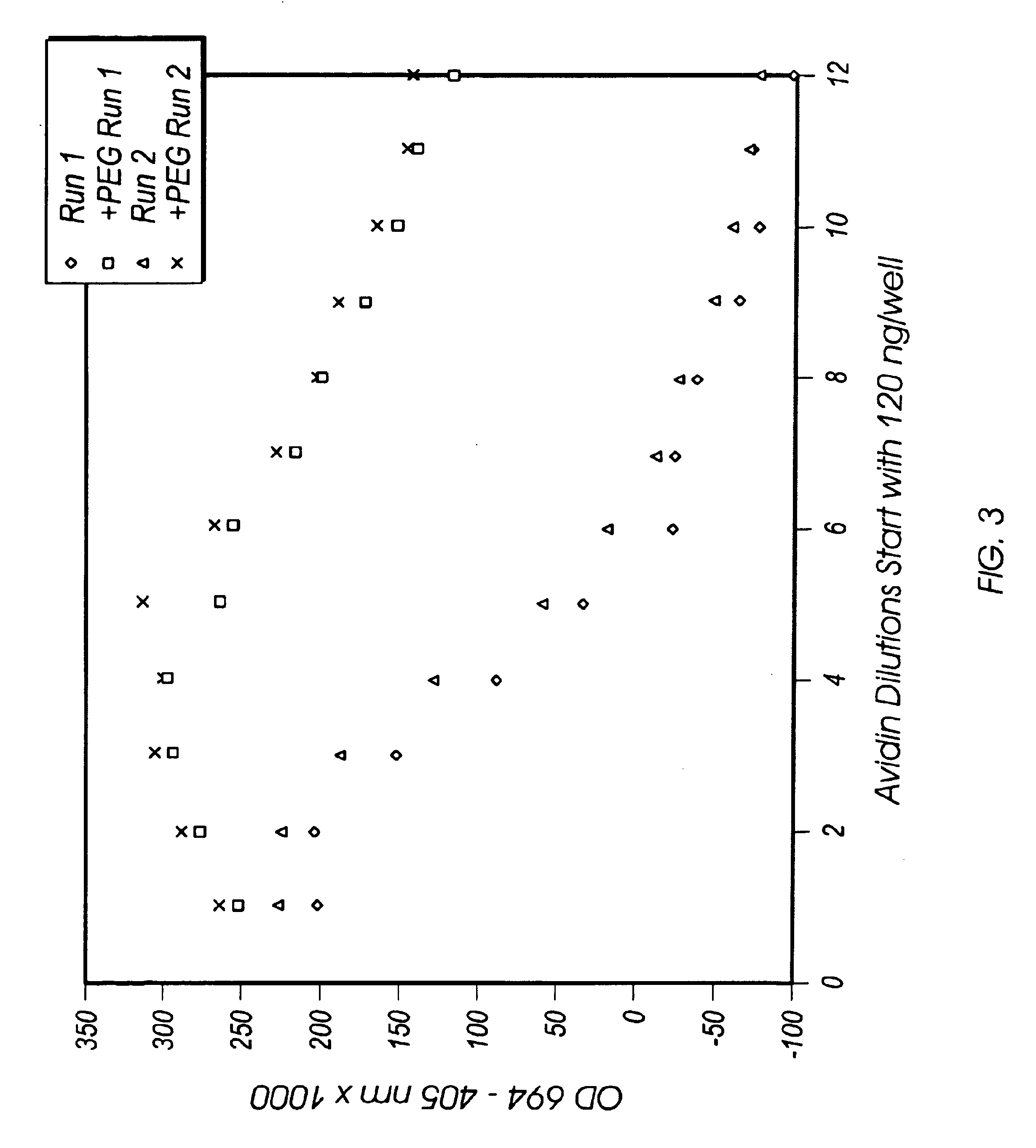Ligand based solution assay for low concentration analytes
- Summary
- Abstract
- Description
- Claims
- Application Information
AI Technical Summary
Benefits of technology
Problems solved by technology
Method used
Image
Examples
example 1
Dilution Series of Avidin (Analyte) with Biotin-conjugated Enzymes
[0072]Conditions of assay: Buffer: 50 mM Tris hydroxymethyl aminomethane, adjusted to pH 8.3 with HCl. The buffer also contains sodium chloride, potassium chloride and magnesium chloride (i.e., 200 mL of final solution contained 0.605 g of Tris hydroxymethyl aminomethane, 1.15 g NaCl, 0.15 g KCl and 0.1 g MgCl2. All volumes placed in the wells are 100 μL.
[0073]Solutions of Avidin, biotinylated alkaline phosphatase (AP-B) and biotinylated horseradish peroxidase (HRP-B), all from Sigma Chemicals, St. Louis MO., were prepared as 0.05 mg / mL stock. A further dilution of Avidin was with 1.5 mL of buffer and 75 μL of Avidin stock solution. The enzyme conjugates were diluted by adding 50 μL of HRP-B and 8.5 μL of AP-B stock solutions to 10 mL of buffer. These first dilutions of stock were kept in an ice bath or in the refrigerator until used and are not retained as dilutions from day to day.
[0074]Developer solution was made u...
example 2
Phenyl Phosphate Substrate
[0079]This experiment has identical conditions to Example 1, except that AP-B and HRP-B were both used at 50 μL of stock in 10 mL of buffer, and the substrate for AP was phenyl phosphate. An additional set of wells is treated identically except that polyethylene glycol 600 was present in the developer at 4% concentration. The wavelengths of measurement were 694-405 nm, because the phenyl coupler has a different peak absorption and has no absorbance in the region of 400 nm. Results are presented in FIG. 3. The negative values are due to some absorbance of the 3-amino-1-(2,4,6-trichlorophenyl)-2-pyrazolin-5-one, acting as a scavenger, in the 405 nm region. In preliminary experiments it was found that four times the activity of alkaline phosphatase is required for phenyl phosphate than for naphthyl phosphate. Because AP acts less efficiently on phenyl phosphate than on 1-naphthyl phosphate, the proportions of enzyme were adjusted accordingly for this experimen...
example 3
Use of a Colorless Scavenger with Phenyl Phosphate Substrate
[0081]The conditions of experiment 2 were again repeated, but with use of phenyl phosphate, and with equal amount volumes of stock HRP-B and AP-B. In addition, the scavenger used in experiments 1 and 2 was replaced with 12, 24 or 48 μL acetoacetamide in 2 mL of developer solution. Readings were taken at 650-405 nm. Results provide a regression curve similar to FIG. 3, except that there are no negative values in the regression because the scavenger forms a colorless coupled compound with oxidized developer. See FIG. 4. Note that excess scavenger can compete with the main color reaction. I.e., all else being equal, using twice as much scavenger will reduce the color to about half, because the scavenger is competing everywhere. The optimum concentration of scavenger can be adjusted to eliminate background color with “no sample blanks” and yet produces maximum color with sample present.
[0082]These model experiments are used to ...
PUM
 Login to View More
Login to View More Abstract
Description
Claims
Application Information
 Login to View More
Login to View More - R&D
- Intellectual Property
- Life Sciences
- Materials
- Tech Scout
- Unparalleled Data Quality
- Higher Quality Content
- 60% Fewer Hallucinations
Browse by: Latest US Patents, China's latest patents, Technical Efficacy Thesaurus, Application Domain, Technology Topic, Popular Technical Reports.
© 2025 PatSnap. All rights reserved.Legal|Privacy policy|Modern Slavery Act Transparency Statement|Sitemap|About US| Contact US: help@patsnap.com



